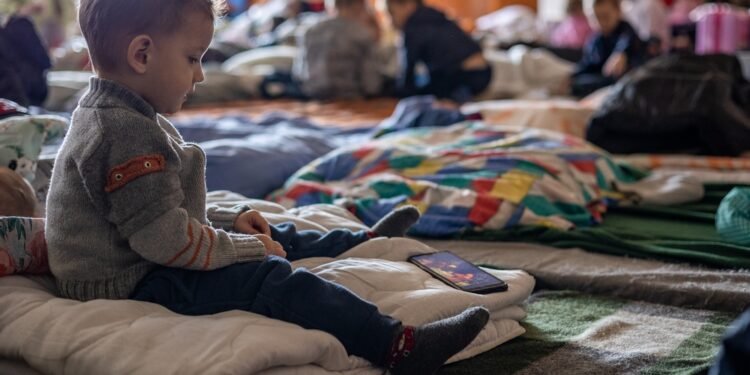Brussels, (Brussels Morning)- “Today, collective asylum reception in Belgium is still insufficiently geared to the needs of children and families. But we can work on that.” The authors conclude this in their research into how asylum centres can be made more child- and family-friendly.
Children in an asylum centre are no exception. At the beginning of 2022, there will be more than 8,000 children in Belgium in collective reception centres, either with (part of) their family or as unaccompanied minors. Accompanied and unaccompanied children thus make up almost a third of all residents (30 percent). In order to work towards a coordinated vision of these children and families, Fedasil commissioned a study.
After more than two years of research by the Knowledge Centre for Family Sciences (Odisee University of Applied Sciences), a book with the most important findings has now been published, says BRUZZ. The investigation will be presented in Brussels on Friday in the presence of, among others, State Secretary for Asylum and Migration Sammy Mahdi (CD&V).
Let a child be a child
As part of the research, the researchers – Katja Fournier, Kaat Van Acker, Dirk Geldof, Dirk & Anke Heyerick – visited nine reception centres of different reception partners throughout Belgium. They interviewed 149 people: 58 parents, 38 children, 38 reception staff and fifteen experts.
Asylum policy urgently needs to further promote the child-friendliness of reception centres, not only to guarantee international children’s rights, but also to allow children on the run to be children and to give them maximum opportunities.
Violence
According to the researchers, their research shows good practices, but also a lot of room for improvement, for example in the field of safety experienced by the children.
“In the vast majority of interviews, residents and staff said they witnessed or were involved in incidents. The majority of the children interviewed indicated that they had indirectly or directly experienced forms of violence in the centers, ranging from bullying and fights to sexually abusive behavior towards minors,” notes Fournier.
The researchers see another challenge in improving the infrastructure of the collective reception centres.
“None of the more than 80 asylum centres in Belgium has ever been designed for this function. They are often former army barracks, hospitals, holiday centres, monasteries or office buildings,” it sounds. “Families have one room. In a limited number of centres parents can cook for their children themselves, but in many places this is not possible. Sanitary areas are shared and do not always feel safe for the residents. Separate sanitary facilities for children are often lacking. “
Parent role
Reinforcing parents in their parenting role is also a challenge.
“In shelters, parents have little decision-making power: in the majority of centres they cannot decide for themselves what or what time the family eats, what the room looks like, when one showers,” it sounds. The research shows areas of tension between parents and staff about the exercise of parental responsibilities and supervision of children.
In conclusion, the researchers state that child-friendly asylum centres are better for all residents. “With the child vision that we developed together, we provide levers to take steps forward, both in terms of support for families and in terms of safety and infrastructure.”
“That now requires far-reaching policy choices to focus on. The results of this study provide the State Secretary and the reception partners with practical tools to get started.”




